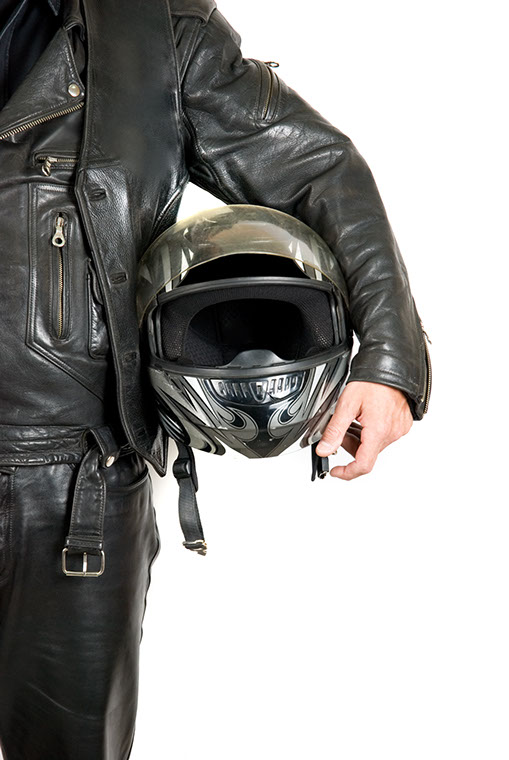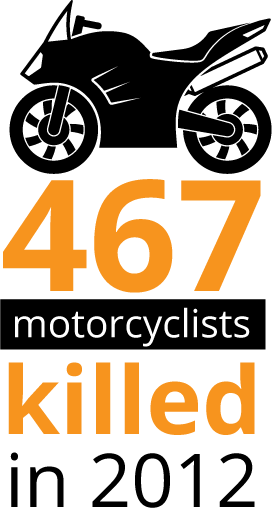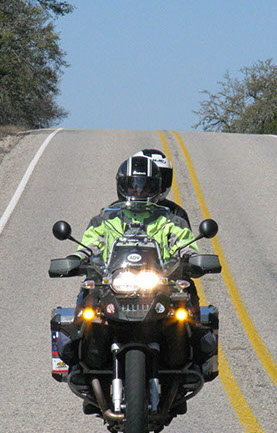

Texas has one of the highest motorcycle crash rates in the country, one that is slowly increasing. In 2012, 467 motorcyclists were killed in crashes, representing roughly 14 percent of crash fatalities in the state. Of the motorcyclists killed, 52 percent were not wearing a helmet at the time of the crash.
RESEARCHERS INVESTIGATE
motorcyclists’ motivations
for wearing safety


“If we can start to influence them to wear even just a few more pieces of gear, it can make a large impact on injury severity and fatality rates,” Michael Manser, human factors program manager and principal investigator on the project, said.


A new project conducted by the Texas A&M Transportation Institute (TTI) plans to address the problem of riders not wearing protective gear, which is more than just helmets. Michael Manser, human factors program manager and principal investigator on the project, said one of the main factors that go into reducing motorcycle fatalities and injury severity is gear. Typical riding gear includes a padded jacket, eyewear, gloves, padded riding pants and riding boots in addition to a helmet.
The study will begin with a survey of riders to identify protective equipment they do or do not wear. Questions on the survey will also help researchers identify the reasons why riders make the decisions they do about gear. Manser said researchers hope to understand more about what would and would not motivate or convince riders to change their use of protective gear.
Daniel Jeffries, contract manager on the project from the Texas Department of Transportation (TxDOT) said without data analysis and studies, implementing a solution would be difficult.
“You have to understand the problems and issues regarding these crashes before you can begin addressing how to correct them,” Jeffries said.
Manser identified the three types of riders he expects to participate in the survey. They include:
• riders that always wear gear,
• riders that hardly ever or never wear any gear, and
• riders who wear gear occasionally.
Manser said this project will focus on the last group, riders that occasionally wear some gear, because they are the most likely to be influenced by the campaign program. The group is also significantly large compared to the first two.
“If we can start to influence them to wear even just a few more pieces of gear, it can make a large impact on injury severity and fatality rates,” Manser said.
While the survey is still underway, Manser had a few ideas as to why riders do not wear all of their gear.
“Weather is probably a big deal here in Texas,” Manser said. “Summers are so hot that riders say it is uncomfortable to wear their gear.”
However, Manser said there are types of gear that are built for hot weather, and that the public may not be aware that this gear exists or how to access it.
This lack of knowledge contributes to the second part of the project, in which researchers will begin developing an outreach program that will inform riders of the benefits of wearing gear and motivate them to wear gear while on a motorcycle. The program is not intended to push for any new laws but instead to encourage riders to change their habits based on an understanding of what motivates riders to wear or not wear gear and better awareness of safety and risks involved with motorcycling riding without gear.
Deployment of the campaign is the last part of the project. Manser said motorcycle rallies are a main location for campaign release.
The study builds off research conducted through TxDOT and by other TTI teams.
“TxDOT does great work in the area of motor vehicle and motorcycle rider safety,” Manser said. “We are continually expanding our focus on motorcycle safety.”
Jeffries said the project is unique because it focuses on a different aspect of motorcycle safety.
“It’s different in that this is one of the more in-depth looks at gear usage we have undertaken,” Jeffries said. “Most of our campaigns are geared toward motorist awareness of motorcycles, getting a motorcycle license, and not drinking and riding.”
The project will also receive assistance from the Texas Motorcycle Safety Coalition, whose team members will assist in determining the right questions to ask on the surveys, provide information about what campaign strategies they have observed to be the most effective, and assist in program deployment.